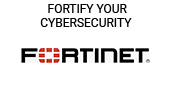
Stefan Deiss, Co-Founder and CEO of The Hashgraph Group, explains how Hedera Hashgraph is transforming blockchain’s limitations into scalable, secure, and sustainable solutions for enterprises and governments.
Hedera Hashgraph is reshaping the distributed ledger landscape through a unique consensus model that delivers high speed, energy efficiency, and enterprise-grade governance. In this exclusive conversation with Tahawultech.com, Stefan Deiss, Co-Founder and CEO of The Hashgraph Group, shares how Hedera is enabling real-world impact—from powering digital notary services at DIFC Courts to revolutionising cross-border payments in Africa. Designed to meet the rigorous demands of governments and large enterprises, Hedera addresses the long-standing challenges of scalability, cost, and compliance that have hindered traditional blockchain adoption. As Deiss outlines, regulatory engagement, legacy integration, and education remain essential to driving broader adoption—challenges the Hashgraph ecosystem is actively addressing through policy leadership and practical innovation.
Interview Excerpts:
How does the consensus algorithm of Hedera Hashgraph differentiate itself from traditional blockchain models, and what advantages does this offer to enterprises and governments looking to adopt blockchain technology?
Hedera Hashgraph employs asynchronous Byzantine Fault Tolerance (aBFT) consensus mechanism that achieves consensus through a gossip-about-gossip protocol and virtual voting, offering faster transaction processing and higher efficiency than traditional Proof-of-Work (PoW) or Proof-of-Stake (PoS) algorithms used in conventional blockchains, with finality achieved in seconds rather than minutes or hours. This fundamental technological distinction enables significant advantages for enterprises and governments that translate into to following concrete benefits:
- Speed & Scalability: 10,000+ transactions per second (TPS) with 3-5 second finality, which is ideal for real-time enterprise applications like payments or supply chains.
- Energy-Efficient: Hedera is the world’s most energy-efficient blockchain/DLT and consumes just ~0.000003kWh per transaction (1,000x less energy than Visa!), and contributes to enterprises/governments meeting their ESG and sustainability targets.
- Cost-Efficient: Transaction fees are fixed at $0.0001 per transaction and considered one of the lowest in the industry. Transaction fees are predictable and denominated in USD, making financial forecasting/budgeting easier for enterprises/governments.
- Highest Security: Mathematically proven asynchronous Byzantine Fault Tolerant (aBFT) ensures the highest levels of security and quantum-resistant that is critical for enterprises and government-grade systems.
- Governance: Hedera is governed by over 30 of the world’s leading organisations such as Boeing, Dell, Deutsche Telekom, Hitachi, IBM, Google, and Standard Bank, just to name a few of the Hedera Council members that provide assurance and governance.
Can you share some notable use cases where Hedera Hashgraph has successfully been implemented by governments or large enterprises?
Hedera has secured several high-profile implementations for both large enterprises and governmental institutions. For example, Hedera has been successfully implemented into the DIFC Courts in the UAE in 2024 as the underlying technology for its Digital Notary and Digital Wills services. ServiceNow also launched a sustainability tracking solution in 2022 on Hedera that enables enterprises to measure and report carbon emissions transparently, which has been adopted by other enterprises seeking to meet ESG reporting requirements.
Standard Bank and Mondelēz International adopted Hedera for faster cross-border payments/trade finance and supply chain/customer loyalty, respectively. Morocco’s Ministry of Education used Hedera for student digital identity wallets. Shinhan Bank and Standard Bank partnered on a Hedera stablecoin for the remittance market. Bahrain implemented Hedera for its national vaccine passport. Avery Dennison uses Hedera for tracking connected products via digital IDs.
With Hedera’s unique approach to scalability and security, how do you see these features addressing the specific challenges faced by both public and private sectors in adopting distributed ledger technologies?
Hedera’s distributed ledger technology fundamentally addresses the blockchain trilemma, which has hindered adoption: the perceived inability to simultaneously achieve security, scalability, and decentralisation. For the public sector, Hedera provides the transaction throughput necessary for government services (10,000+ TPS) while maintaining immutable and tamper-proof records – essential for applications like digital identity, voting systems, and vital records.
“The governance model of Hedera with a distributed council of the world’s leading organisations, delivers the accountability and stability governments require for critical infrastructure.”
In the private sector, Hedera addresses enterprise concerns by providing enterprise-grade solutions and decentralised applications that are secure, efficient, and affordable. With low and predictable fixed fees ($0.0001 per transaction) and finality in just seconds, these characteristics enable enterprises to achieve scalability with micro-payments, real-time settlement, and high-volume data integrity solutions, which were previously impractical on traditional blockchains. Most significantly, Hedera’s energy efficiency of 0.000003kWh per transaction aligns with corporate ESG initiatives, allowing organisations to leverage Hedera without the environmental concern of traditional blockchains that have deterred adoption.
What key challenges do you foresee in facilitating broader adoption, especially within the governmental sector?
Despite its technical strengths, Hedera faces adoption challenges in government due to legacy system integration. The Hashgraph Group offers solutions to bridge these technological gaps. Regulatory uncertainty, lack of understanding of distributed ledger technology leading to misassociations, and lengthy government procurement cycles further hinder adoption. Hedera must balance innovation with backward compatibility for ongoing projects.
What are the steps Hedera is taking to ensure regulatory compliance in jurisdictions with complex blockchain regulations, particularly in the UAE and the Middle East?
Hedera operates with a dedicated Chief Policy Officer that ensures proactive engagement with regulatory bodies around the world, including the UAE and the Middle East, ensuring regulatory compliance in jurisdictions with complex blockchain regulations. The goal of the Hedera policy team is to help shape policy and regulation around the world to enable the broader adoption for enterprises and governments. With that said, the Hedera network is designed with compliance and security in mind, featuring an immutable ledger, auditable, and tamper-proof transaction trails that provide transparency and traceability, essential for meeting regulatory requirements such as the compliant solution developed for the DIFC Courts on Hedera.
Hedera’s network architecture employs separation of duties to aid data privacy compliance, allowing user control over data handling. For instance, ‘tejouri,’ a digital vault developed with DIFC Courts in 2022, securely stores various documents in line with UAE law, highlighting Hedera’s regulatory commitment. Hedera collaborates globally with regulators to create solutions for data privacy, ESG reporting, and other regulations. This commitment is further shown through the ‘DeRec Alliance,’ focused on secure and simple digital asset key recovery, interoperability standards, and enhanced compliance to build enterprise and government trust for Web3 adoption.





